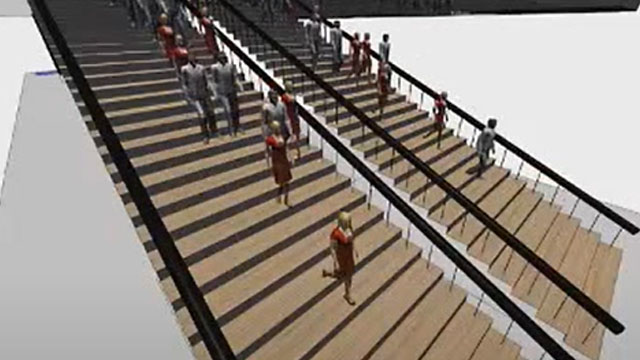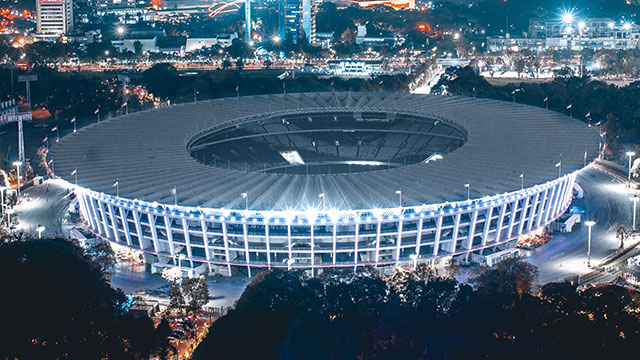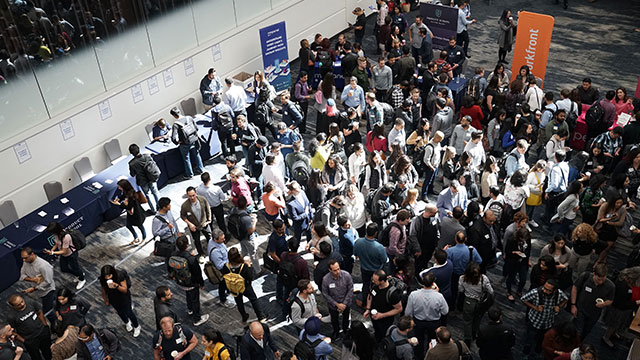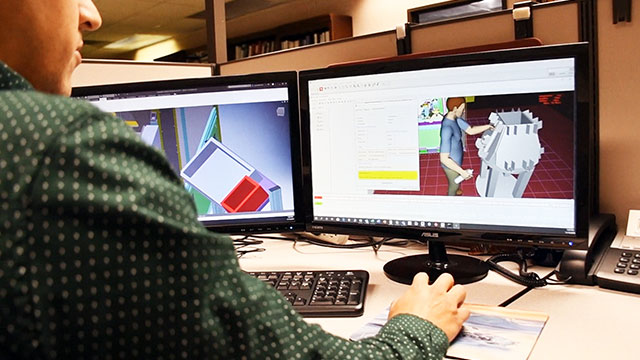The Power of Complex Systems Modeling and Analysis: Cutting-Edge Agent-Based Simulation Services
Agent-based modeling is a cutting-edge computational approach used to model and analyze the behavior of complex systems. By simulating the actions and interactions of individual agents, simulation modeling allows organizations to study how these agents behave as a group and how they affect the overall system.
Whether you're looking to optimize your supply chain, study material flow and workcells, or design a new production line, our team of experts can help you harness the power of agent-based simulation to gain valuable insights and make informed decisions.
PMI Agent Based Simulation Advantages & Benefits
- 30+ Years of Simulation Modeling experience, giving us the knowledge and capability to meet your exact requirements and provide expert insight
- Custom Simulation solutions to meet your specific requirements
- Customize your model to assist in “what-if” scenarios and planning
- Provide insights to increase ROI, optimize pedestrian and traffic flow, and production lines.
- Leverage a variety of advanced software and technology to meet your needs
Agent-Based Simulation Application Possibilities
Engineering:
Agent-based simulations are used to model and test complex systems and design new products, services, and systems. For example, an engineer can use an agent-based simulation to model the behavior of an autonomous vehicle in a traffic system, analyze the performance of a communication network, or optimize the operation of a power grid.
Business Applications:
In business, agent-based simulations can analyze and optimize supply chain systems, customer behavior, and marketing strategies. For example, a company can use an agent-based simulation to model the behavior of consumers in a market, analyze the impact of a new product launch, or optimize pricing strategies.
Urban Planning:
Urban planners can use agent-based simulations to study individual and group behavior in cities and inform planning decisions on land use, transportation, and more. They can model behavior, analyze the effects of projects, and support transportation planning.
Natural Resource Management:
Natural resource managers use agent-based simulations to study the impact of human activities on the environment and make informed decisions for sustainable resource use. These simulations can model the behavior of individuals, analyze the effects of practices, and support conservation efforts.
Optimize Systems with Agent Based Simulation Modeling

Infrastructure Design Optimization
Test layouts to determine their performance at different levels of capacity. Pedestrian simulation can highlight bottlenecks and areas seeing the most foot traffic with heatmaps and other data visualizations. These can help inform design alterations which can then be tested and compared through simulation.

Service Level Optimization
Simulate queues of patrons at concert venues, sporting events, airports etc. to identify the optimal number and placement of installations such as ticketing kiosks and security checkpoints to achieve a desired level of service.

Emergency Preparedness
Model evacuation and/or shelter-in-place plans in the event of an emergency. Using simulation, our team can determine the time to evacuate from any given setting, identify bottlenecks, and help with the planning of evacuation routes, and the placement emergency exits and personnel.
Industries that Benefit from Agent Based Simulation
Supply Chain Management
Manufacturing
Transportation & Logistics
Retail
Emergency Response
Utilities and Energy
Research and Development
Aerospace
Food and beverage
Architecture
Manufacturing Process Systems
Ecological Systems
Computer Science Systems
Social Systems
Economic Systems
Entertainment Venues
Event planning
Urban planning
Disaster response
Airports
Our Experts
With over 30 years of experience with simulation technology and software, PMI brings knowledge and experience to your project. We employ highly experienced team members who possess a wealth of knowledge in multiple industries. Let our qualified specialists help meet your needs!

Software & Technologies


Related Service: Industrial Engineering with Simulation Services

In industrial engineering, simulation is used to analyze and evaluate spaces in terms of performance, dimensions, throughput times, capacities, staffing requirements, and other planning parameters. The visual representation capabilities of simulation also make it possible to compare different scenarios for a space and evaluate their effectiveness.
PMI offers simulation services to a wide range of clients, including warehouses, manufacturing plants, and automotive companies. The ability to test processes and explore "what-if" scenarios before implementation can help prevent costly mistakes and aid in making informed decisions.
Frequently Asked Questions in Agent Based Simulation Services
Discrete Event Media
Let our experts show you how our Agent Based Simulation Services can support your projects!
Send a message to our team by filling out the form below. Describe your project, ask questions, or even request a bid.
An expert from our team will be in touch with you within one business day!
Want to schedule a time to speak with one of our representatives NOW?
